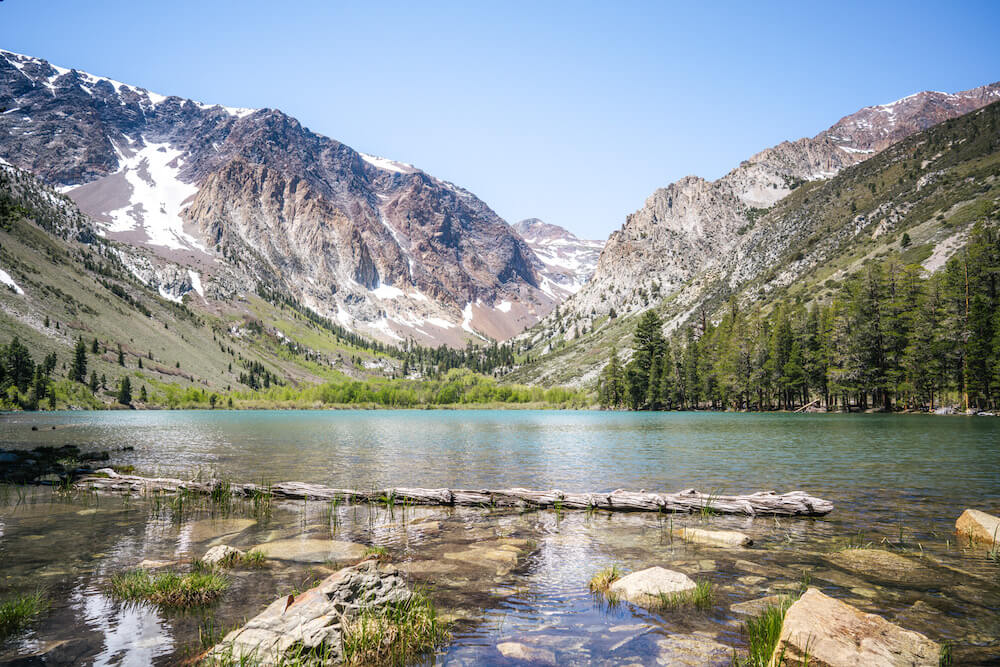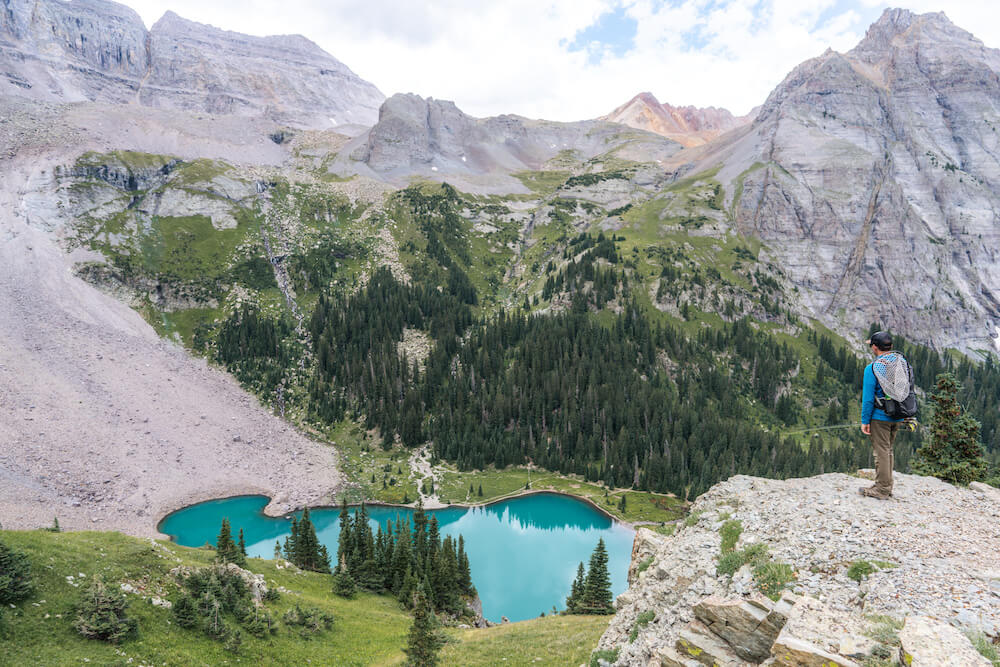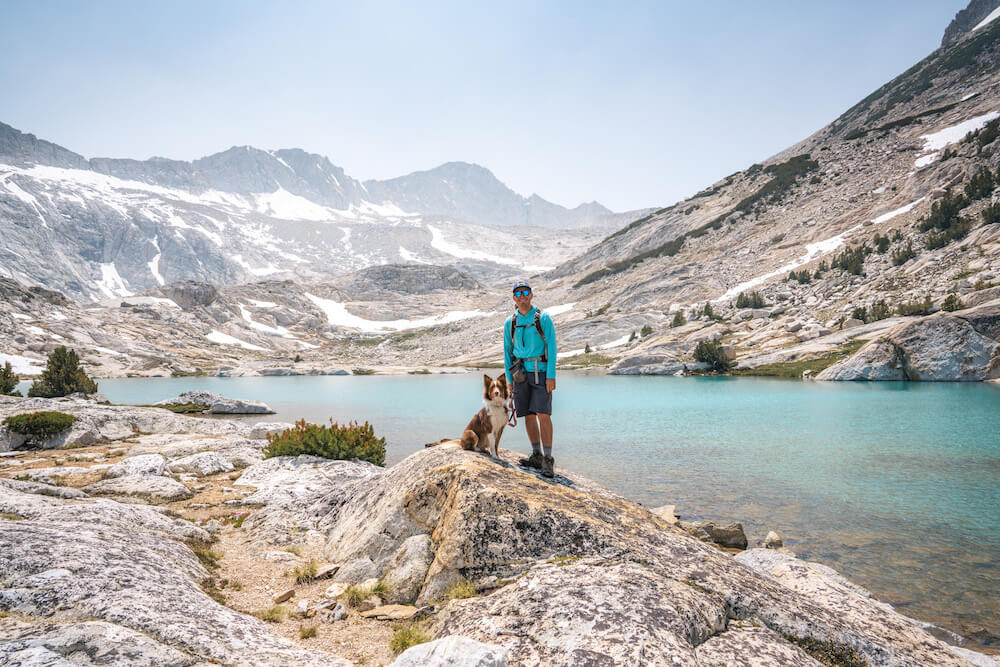We were lucky enough to snag a coveted day pass to the pristine paradise of Lake O’Hara. Touted as “The Crown Jewel of the Rockies,” we set off on the trail to see the famed view from Opabin Prospect for ourselves. Of course a day in the Rockies anywhere wouldn’t be complete without an attempt to catch some fish, too.
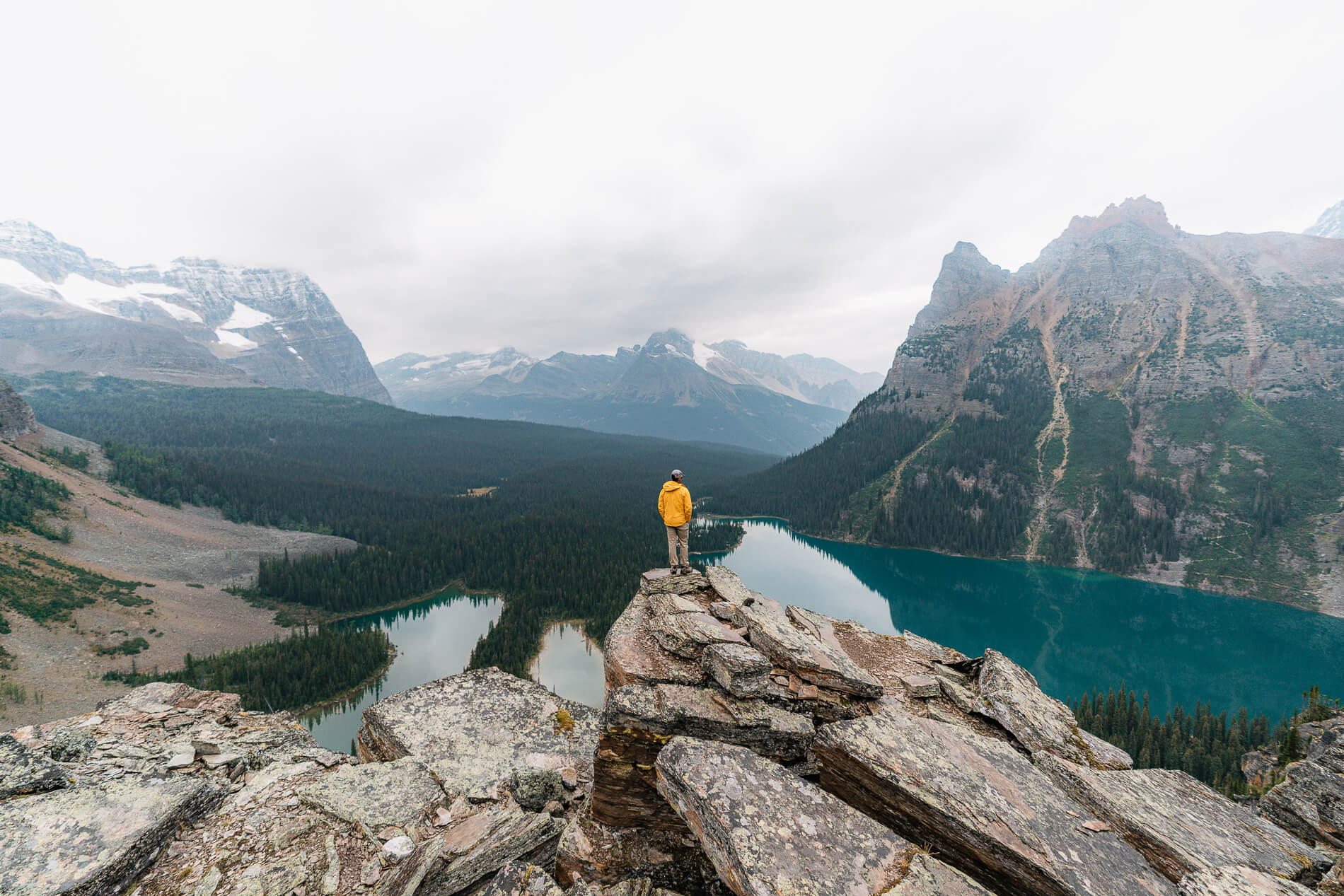
The first time we saw a photo from Lake O’Hara, we knew we had to see this pristine mountain paradise in person. After some quick Googling, we discovered that Lake O’Hara is a unique place in the Canadian Rockies backcountry. Parks Canada limits the number of visitors to the Lake O’Hara area to 200 per day – 80 day trippers, and the rest are backpackers, campers, and lodge guests. Reservations for day bus passes to the area open up every spring (this past spring it was on April 20 at 8 a.m. MDT). According to Parks Canada, about 1,000 of 17,000 visitors succeed, or 5%. So we were extremely lucky and super excited to be able to snag a pass for our trip.
On the Sunday morning, we drove to the Lake O’Hara parking lot located on the south side of Highway 1 as it crosses into British Columbia and Yoho National Park. The only (sensible) access to Lake O’Hara is a very bumpy 7-mile, 20-minute ride on a yellow school bus equipped with gigantic off-road tires. Those who weren’t able to reserve a bus pass are allowed to hike the 7 miles in to the trailhead, but you also have to hike the 7 miles out as you can’t stay overnight without a pass. We did see a few ambitious crazies attempt this!
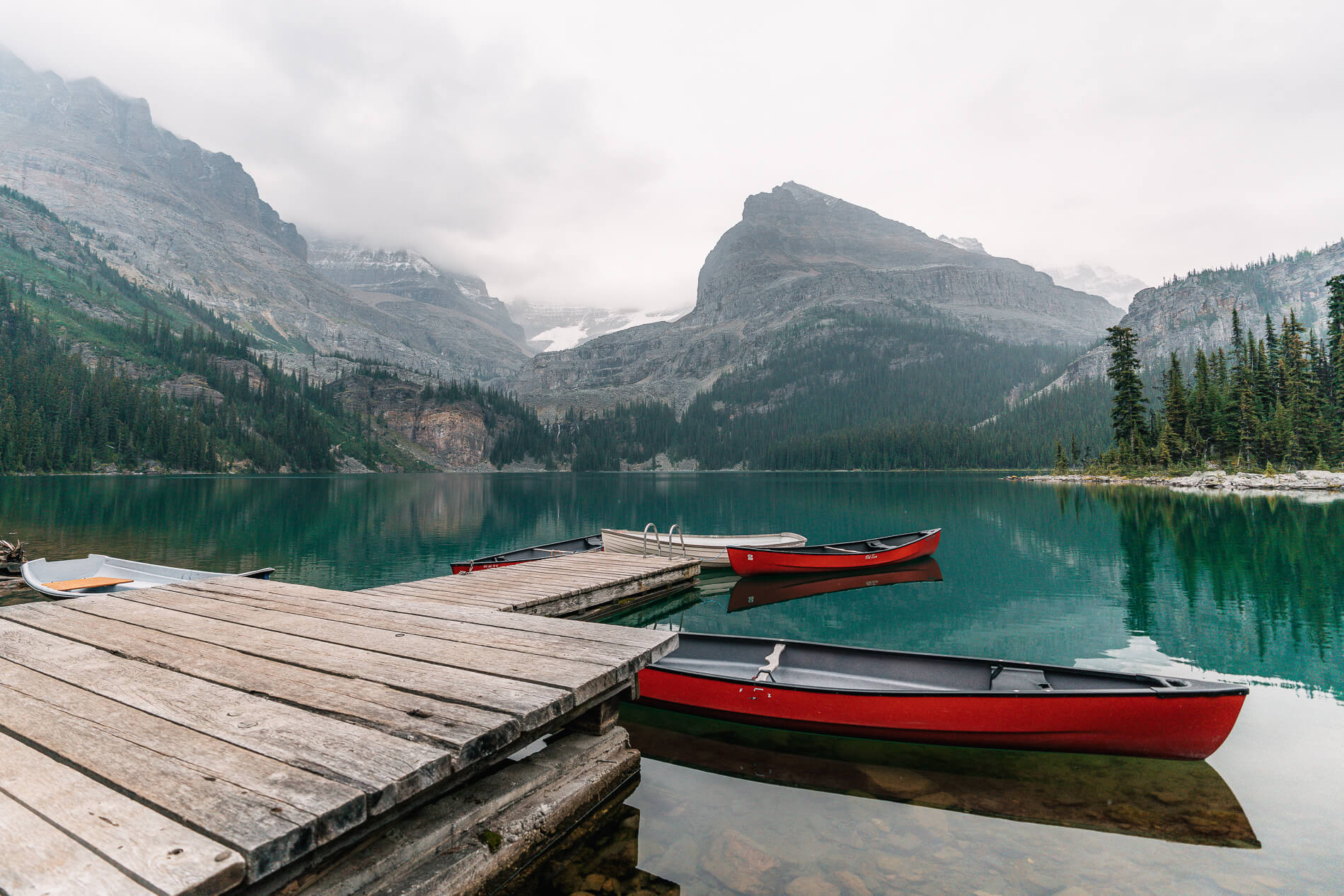
The bus drops you off right at the base of beautiful Lake O’Hara, where numerous trails into the area start off. We had done some research ahead of time and opted to do the Opabin Circuit, a loop trail that goes up on to the Opabin Plateau and back down while passing by a few small lakes and streams. On the bus ride up, a park ranger warned us that a mama grizzly and her babies had made Lake O’Hara their home for the summer and had been spotted in the area recently.
With bear spray in hand, we set off on the trail. It was a moody day with low clouds and light showers on and off, but we were hoping that by the time we reached the prospect the clouds would clear for some better views.

The trail goes along the shore of Lake O’Hara before it heads up a small hill to Lake Mary, a small shallow lake that sits beneath the plateau.
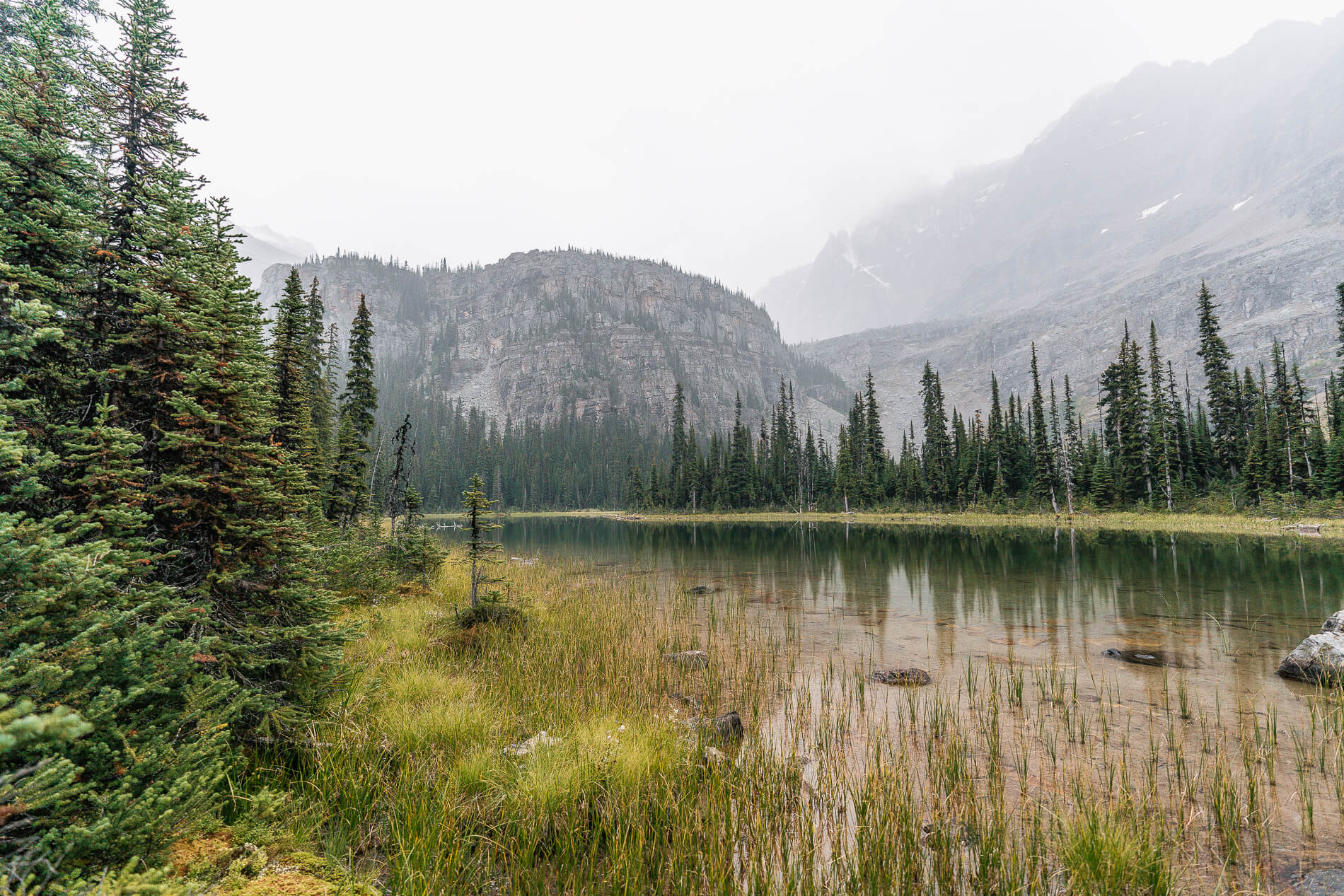
The next portion of the trail was steeply up hill as it switch backed up a scree field dotted with larches. This was the first time we got to see a larch up close and personal and we must admit, they are really cool trees.
Larches are one of the few coniferous trees that change colors and lose their needles. They typically grow right at tree line where regular conifers can barely survive. You can distinguish a larch from other pine trees because they are a bit lighter and color and have needles that grow in star-shaped bunches.
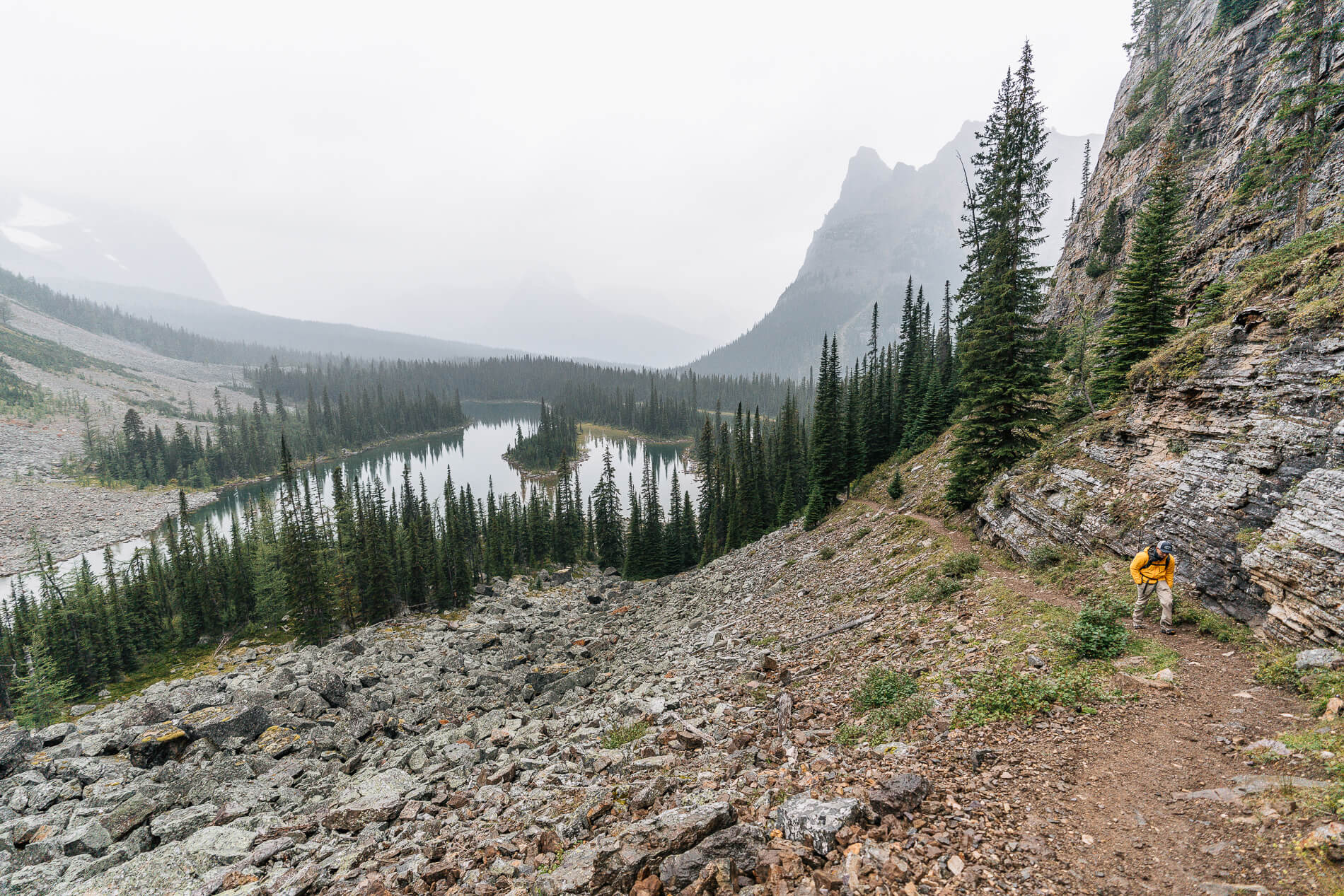

We finally crested the hill and walked through an alpine meadow with larches and amazing views of jagged peaks and Opabin Glacier.
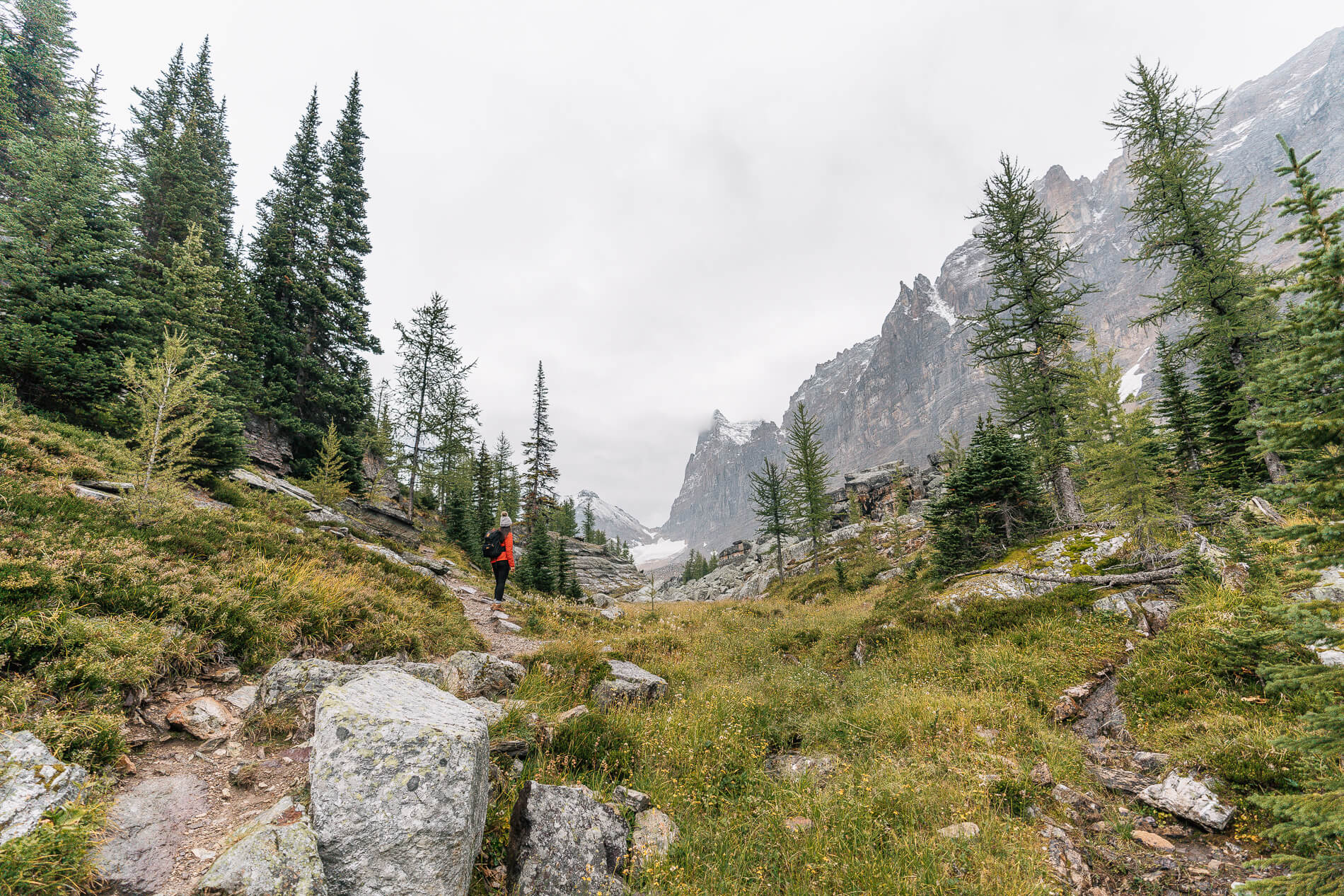
Once on the Opabin Prospect, the trail winds its way through a dense larch forest right along the edge of the rim. As it rounds the northern edge the trees clear and there are some amazing views of Lake O’Hara and the surrounding peaks. We were fortunate that the clouds had started to lift a little so we could just barely see the Cathedral Mountain off in the distance.

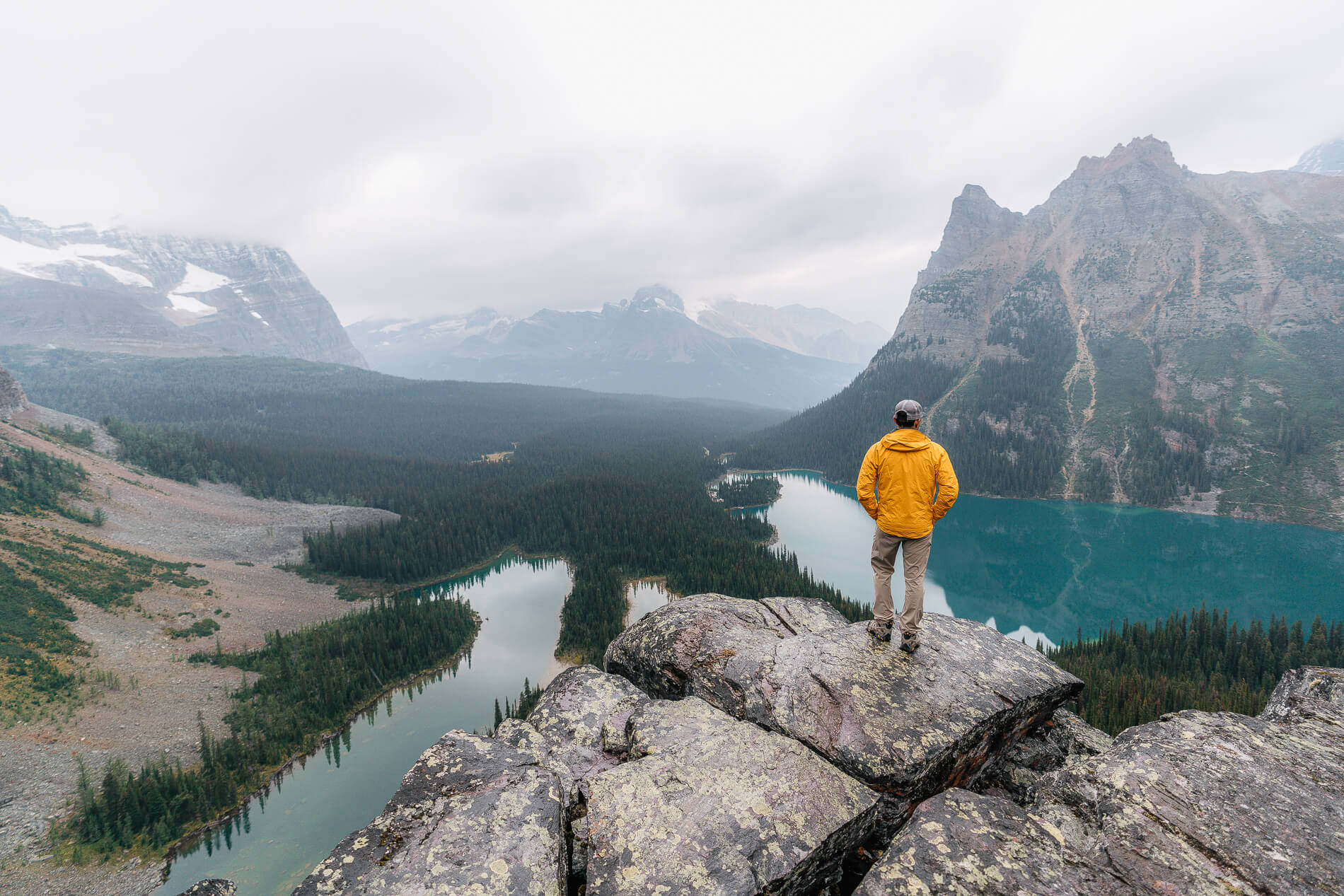
We stopped here to take some pictures, eat our packed lunch and take in one of the best views in the Rocky Mountain range. While we took tons of photos here, sometimes it’s nice to just sit, relax, and take in a view that few people are able to see in person. It’s always surreal to be in the presence of a gorgeous scene you’ve only ever been able to admire in photos.

After spending an hour or so at the prospect, we continued down the trail which led us by the tiny but picturesque Cascade Lakes.
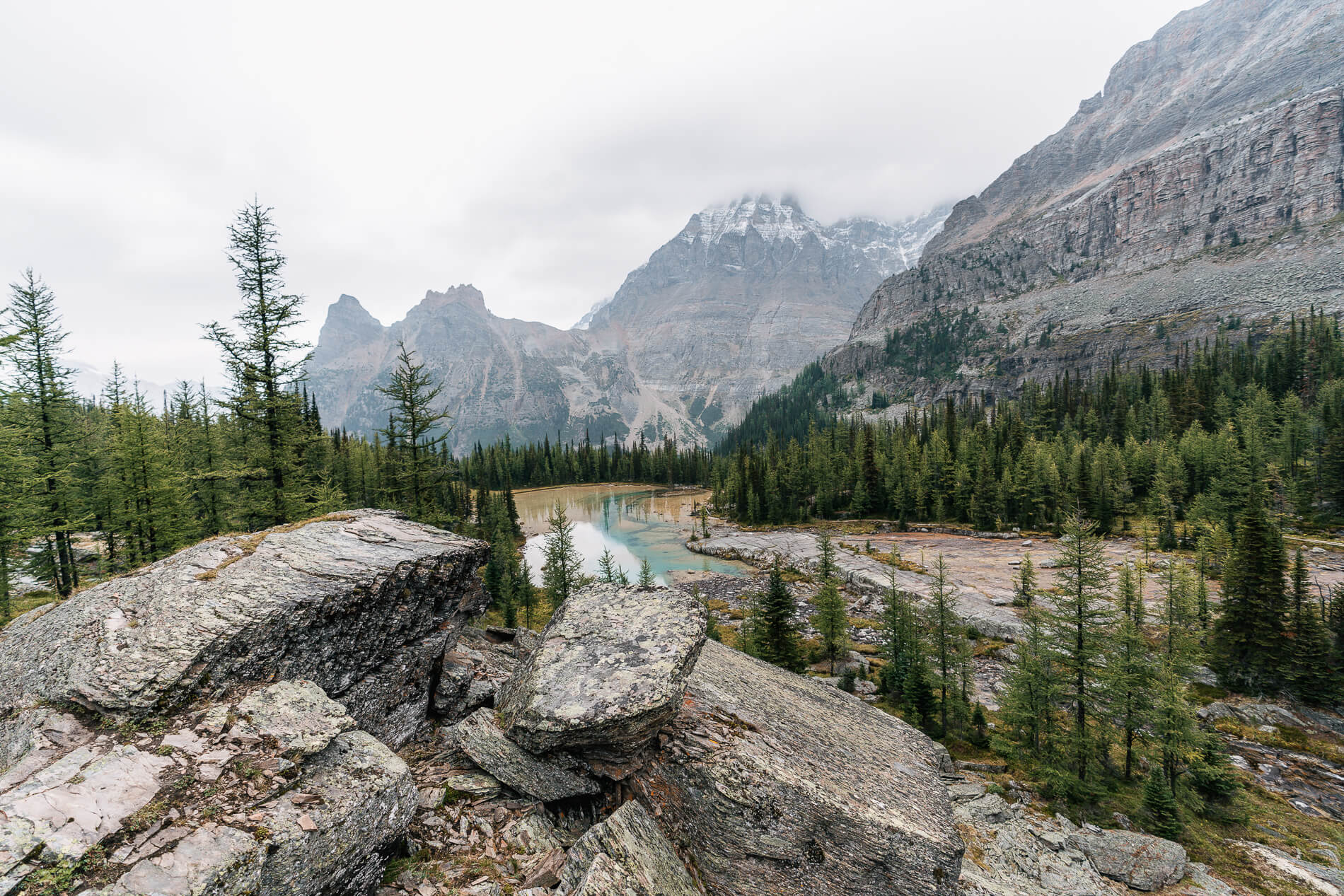


We had heard that there were fish in Lake O’Hara, so Cory packed his fly rod on the hike in hopes that we would have some time before catching the bus pack to toss in a few times. After the Cascade Lakes we opted to head back down the hill to try our hand at a some of the westslope cutthroat trout who make Lake O’Hara their home.
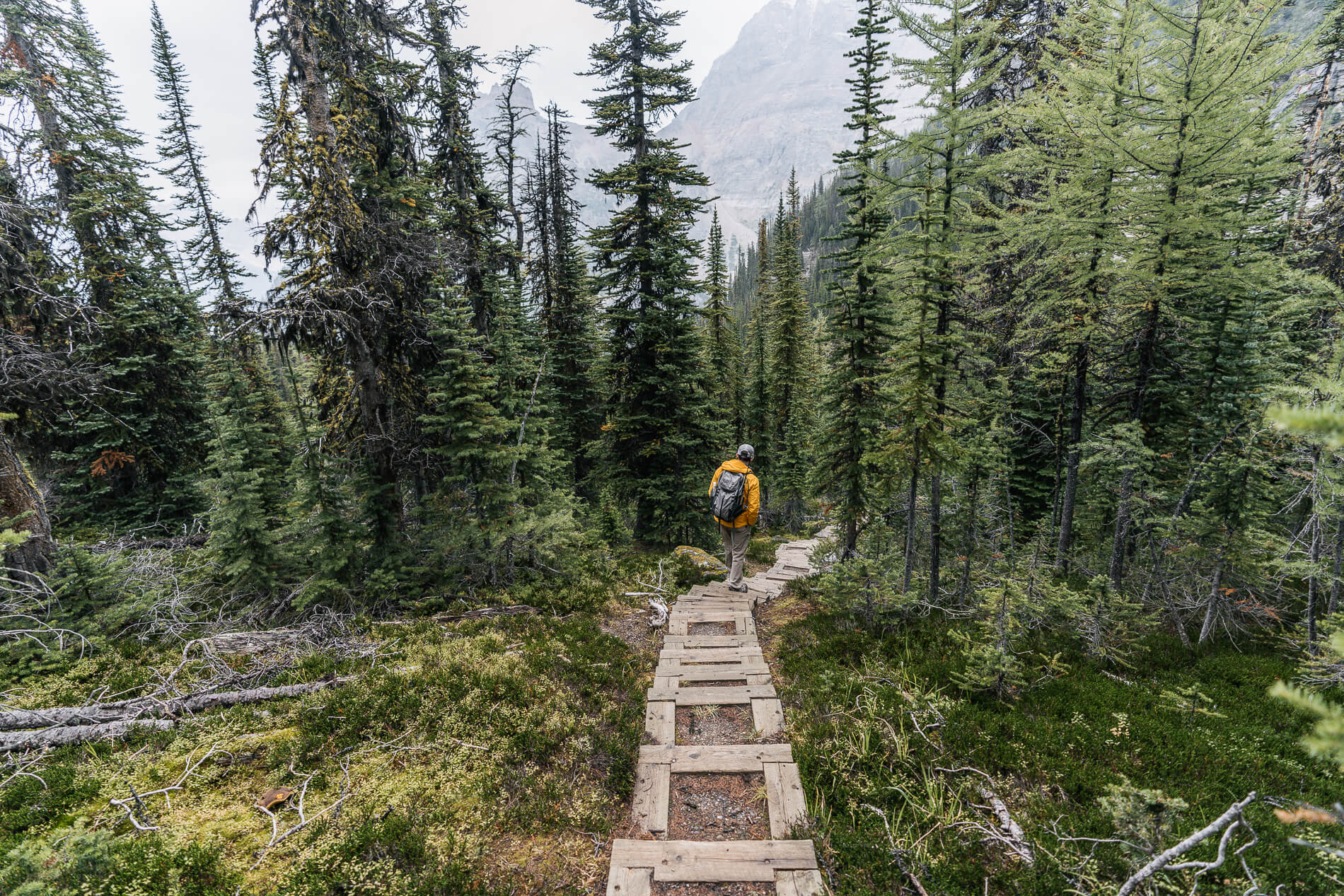
This route had lots of wooden steps that some people may prefer when going uphill, but we were happy to take these going down the steep hill to the lake. The trail followed the outlet creek from the Cascade Lakes through a dense forest. We noticed tons of huge red orange mushrooms and some nice cascades in the creek.
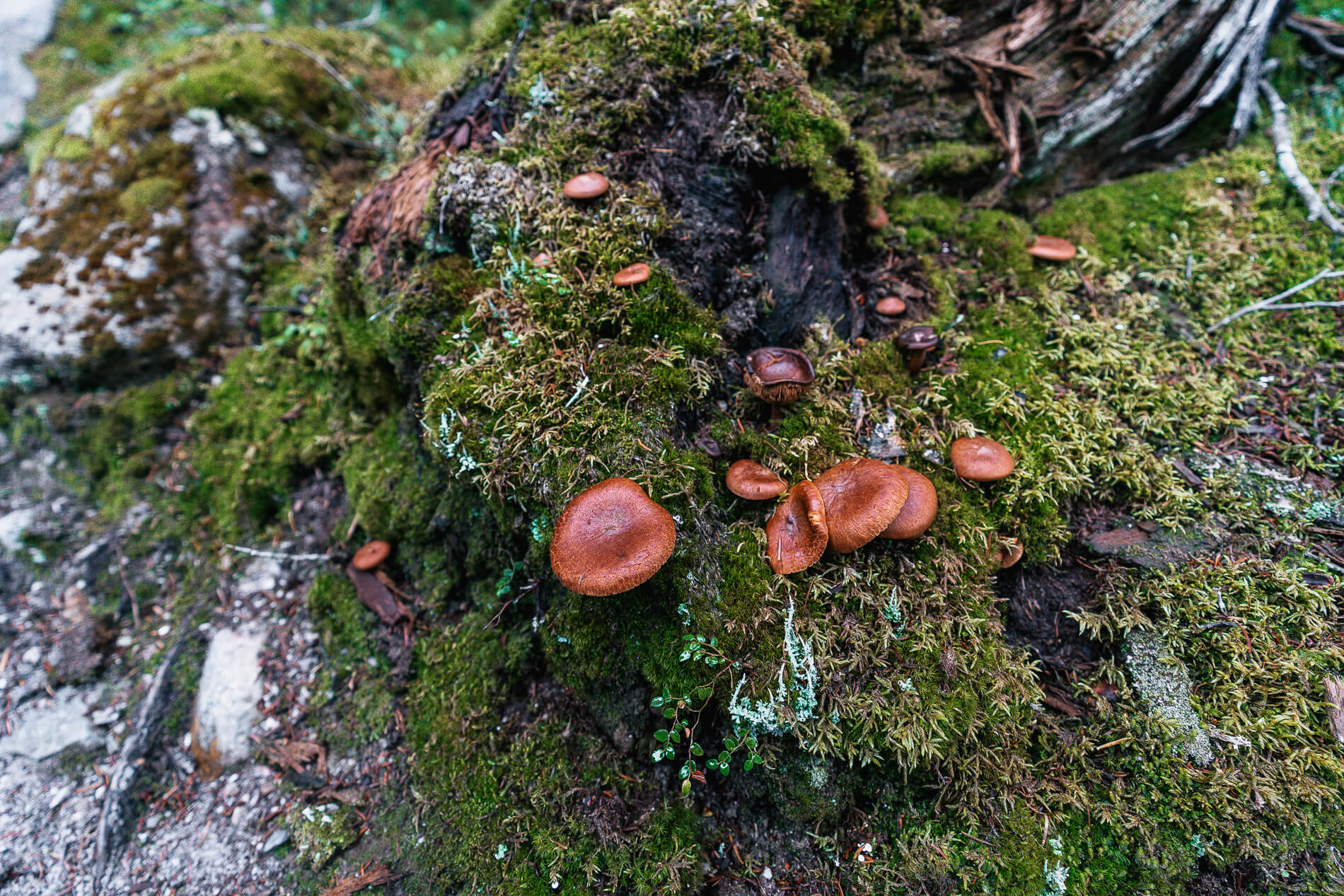

The trail dropped us off at the lakeshore at the opposite end of Lake O’Hara. Cory set up his fly rod with the go-to simi seal leech. Right away we noticed the hoard of mayflies and midges in the air as well as a few rises further out in the lake. The lake has quite a few inlets, so we chose one that had a nice drop off to focus on.

After about 10 casts or so, we had a follower go all the way up to where it and the take were visible – fish on!
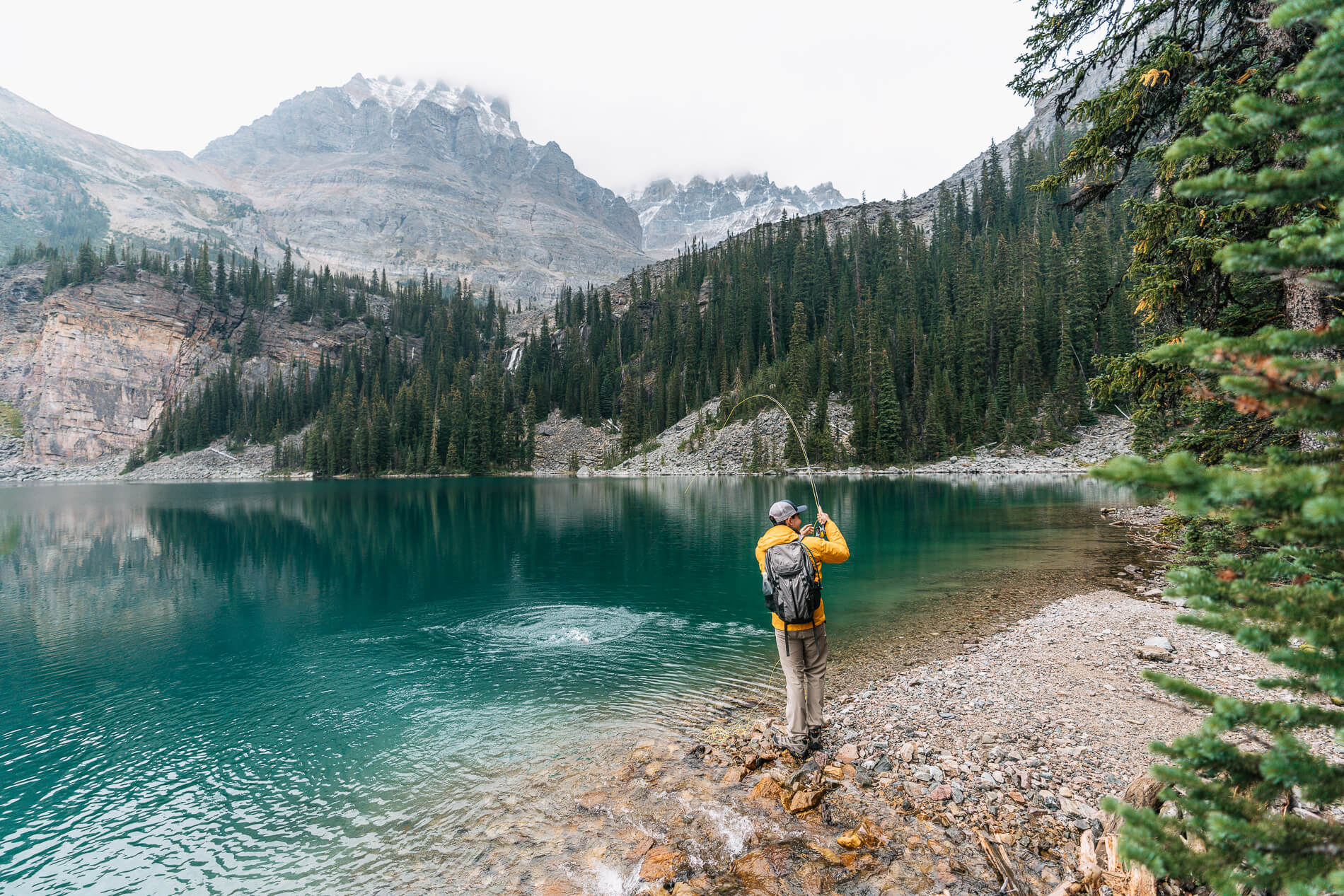
The fish was a beautiful Westslope Cutthroat caught in its native range. First Canadian fish checked off the bucket list!
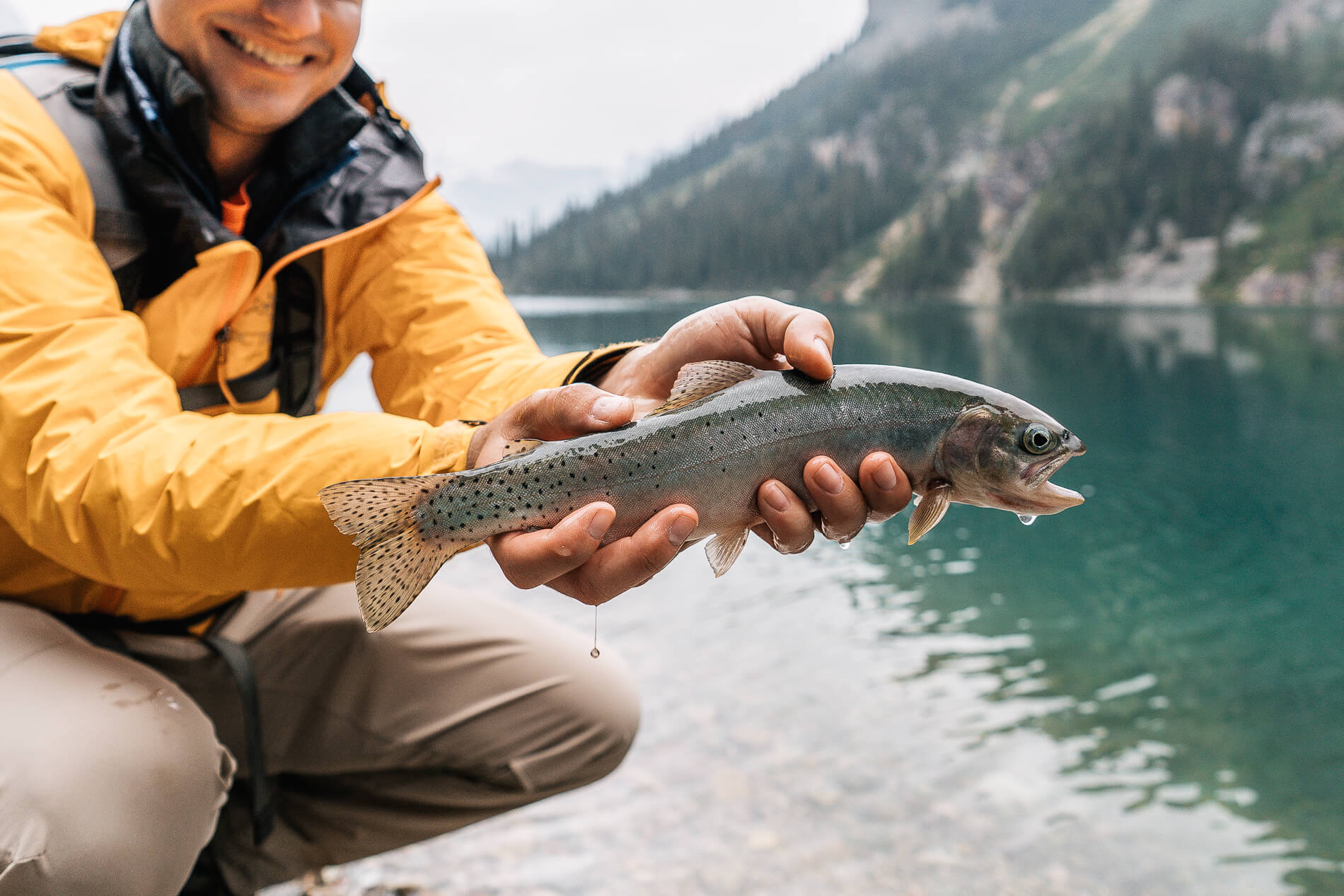
That cutty managed to be our only fish of the day, but we felt lucky that we got to catch a fish in such a beautiful and protected area. Next time, we’ll try fishing the creek, or “brook” as the locals call it.
At the end of our trip, we agreed that our day at Lake O’Hara was really the only time during our Canadian Rockies road trip that we weren’t surrounded by tourists – probably the only time during our trip we felt like we were truly in the wilderness. The Opabin Circuit was one of the most serene and beautiful hikes we’ve ever done, and even though we had seen blue lake after blue lake on our trip, Lake O’Hara definitely felt special. We’re grateful for Parks Canada for keeping the area so pristine and protected – we wish more parks would do this. We wished we had stayed in the Lake O’Hara longer, but we will definitely be back (if we get lucky and snag another permit).
